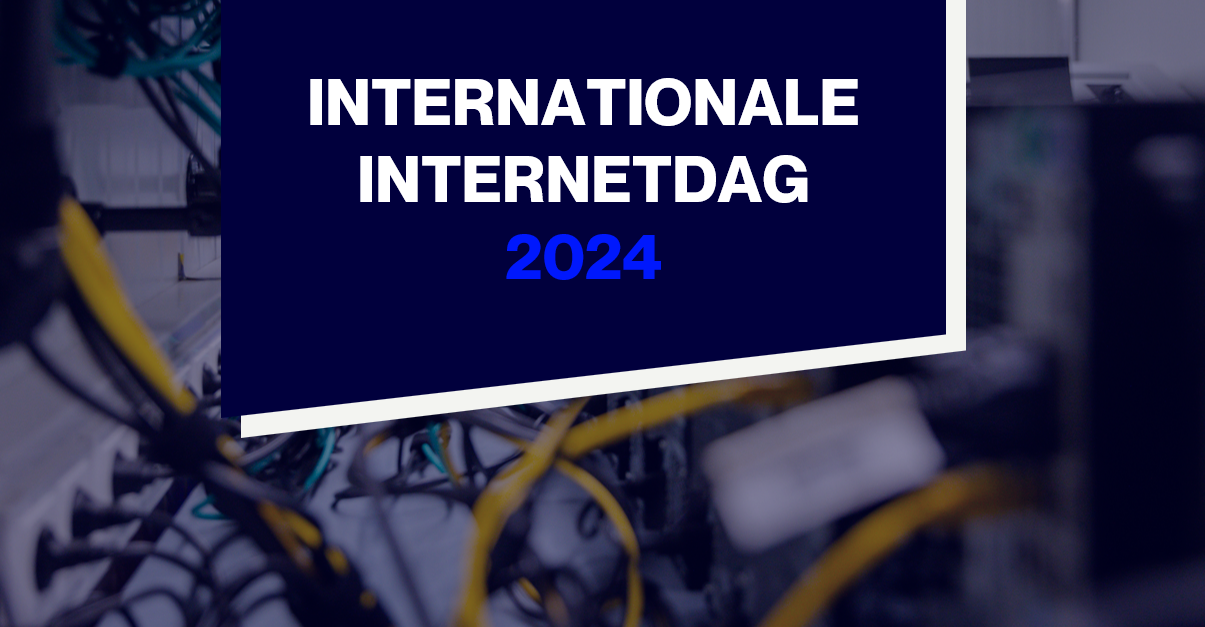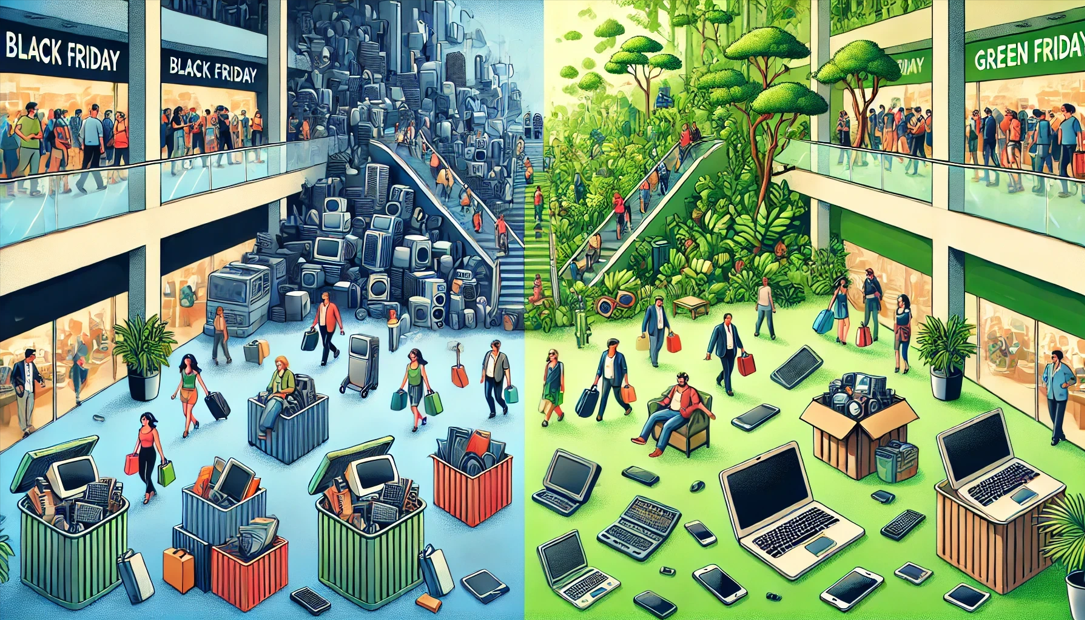Inhoud
- 01 What Is International Internet Day?
- 02 The Evolution of the Internet: From ARPANET to AI
- 03 How sustainable is the internet?
- 04 What Hardware Is Needed to Power the Internet?
- 05 The Role of Reuse and Recycling of IT Hardware for a Sustainable Internet
- 06 Potential Future Developments
- 07 Conclusion
On October 29, we celebrate International Internet Day, a moment to reflect on the impact of the internet on our society and how it has connected our world.
Since the first internet connection in 1969, the internet has undergone a massive transformation—not just technologically, but also in the way we communicate, work, and live.
While we enjoy the benefits of the internet, it’s also important to consider its downsides, particularly the sustainability of the infrastructure that keeps it running.
So, how sustainable is the internet, and what can we do to reduce its environmental impact?
What Is International Internet Day?
International Internet Day marks the date in 1969 when the first successful internet connection was established between two computers at the University of California, Los Angeles (UCLA) and the Stanford Research Institute.
This connection, part of the ARPANET project, is considered the early foundation of what would later become the modern internet.
Since then, the internet has evolved at a rapid pace, with billions of users worldwide accessing information, entertainment, and communication daily.
The Evolution of the Internet: From ARPANET to AI
The internet began as a simple communication network for scientists and researchers.
Today, it has grown into a global necessity that affects every aspect of our lives.
From the early days of slow dial-up connections to today’s high-speed broadband and mobile networks, the internet has come a long way.
Now, Artificial Intelligence (AI) is playing an increasingly important role in shaping the internet.
AI enables the analysis of vast amounts of data, provides personalized recommendations, and can make autonomous decisions using complex algorithms.
Search engines like Google use AI-driven algorithms to scan millions of web pages in milliseconds and display the most relevant results.
Social media platforms use AI to determine what content you see and how interactions are filtered.
While AI has enhanced the way we use the internet, it has also increased the demand for computing power and infrastructure—raising an important question:
How sustainable is the internet?
How sustainable is the internet?
Even though the internet seems virtual, it relies on massive physical infrastructure to function.
Data centers, servers, and network cables form the backbone of the internet, requiring enormous amounts of energy.
It is estimated that data centers worldwide consume between 1% and 2% of the total global electricity supply, and this percentage is rising as demand for internet services increases.
However, energy consumption is just one part of the sustainability challenge.
The production and maintenance of the hardware that supports the internet—such as servers, routers, and modems—has a significant environmental impact.
Electronics production requires rare metals like gold, cobalt, and lithium, and mining these resources often harms the environment and local communities.
Recycling IT hardware properly can help recover valuable materials from old devices, reducing the need for new mining.
What Hardware Is Needed to Power the Internet?
Although the internet feels intangible, it relies on a vast network of physical hardware.
Some essential components include:
Data Centers → Large facilities filled with servers that host websites, apps, and cloud services.
Routers and Switches → Direct data traffic efficiently across networks.
Undersea Cables → Millions of kilometers of fiber-optic cables laid on the ocean floor connect continents and enable international internet traffic.
Home Equipment → Devices such as modems, routers, laptops, and smartphones form the internet’s final connection points.
All these devices have a limited lifespan, contributing to a growing electronic waste problem.
This brings us to a crucial topic: reuse and recycling.
The entire process of managing IT hardware at the end of its life cycle is known as IT Asset Disposition (ITAD).

The Role of Reuse and Recycling of IT Hardware for a Sustainable Internet
One of the biggest challenges facing the internet is the shortening lifespan of electronic devices.
Smartphones, laptops, and servers are often replaced after just a few years, even though many components are still functional.
This is where reuse and recycling become crucial.
By recycling old hardware, we can:
Recover valuable materials such as metals and plastics.
Reduce the demand for newly mined resources.
Protect ecosystems by minimizing electronic waste pollution.
Lower CO₂ emissions from manufacturing new devices.
At Whale Recycling, we are committed to a sustainable future by promoting reuse and recycling of IT hardware.
By giving old equipment a second life, we reduce its environmental impact and promote efficient resource use—benefiting both the planet and businesses.
Potential Future Developments
The future of the internet looks promising, but it also presents challenges in terms of sustainability.
As technology advances, we expect to see:
Growth in energy-efficient solutions, such as “green data centers” powered by renewable energy. AI and machine learning optimizing energy consumption in networks, reducing the internet’s ecological footprint. Quantum computing, which could revolutionize data processing by performing complex calculations with a fraction of the energy used by traditional computers. Innovations in IT hardware reuse and recycling, ensuring that technology and sustainability go hand in hand. Companies like Whale Recycling play a key role in this transition, showing that tech and sustainability can work together.
Want to know how Whale IT Recycling can help your business?
Conclusion
International Internet Day is a time to reflect on the impact of the internet on our world—not just its benefits, but also the challenges it brings.
While we enjoy the internet’s endless possibilities, we must also consider its environmental impact.
By reusing and recycling IT hardware, we can help build a more sustainable internet and a greener future.
At Whale IT Recycling, we are proud to play an active role in this movement.
WHALE take care of IT
Bronnen



